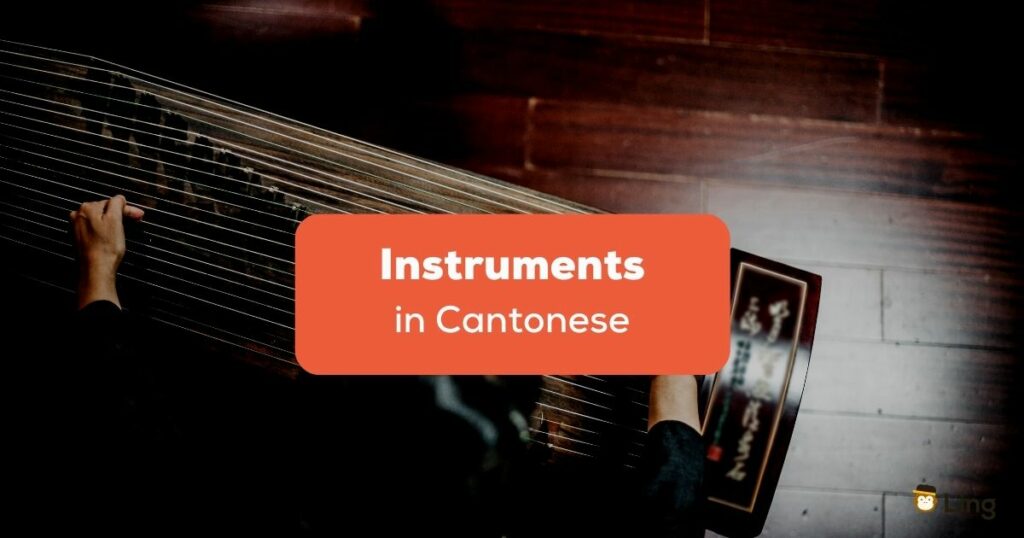Do you love music? Why not learn these easy and excellent instruments in Cantonese, like the piano (鋼琴 gong3 kam4) and guitar (吉他 git3 taa1)?
Traditional Chinese music is very rich. Although traditional Chinese/Cantonese music came from Mainland China, you can also see the cultural influences in Hong Kong. Hong Kong music is an eclectic combination of traditional and contemporary genres. There are many things to explore about Cantonese music, but first, let us explore the different musical instruments.
Common Musical Instruments In Cantonese
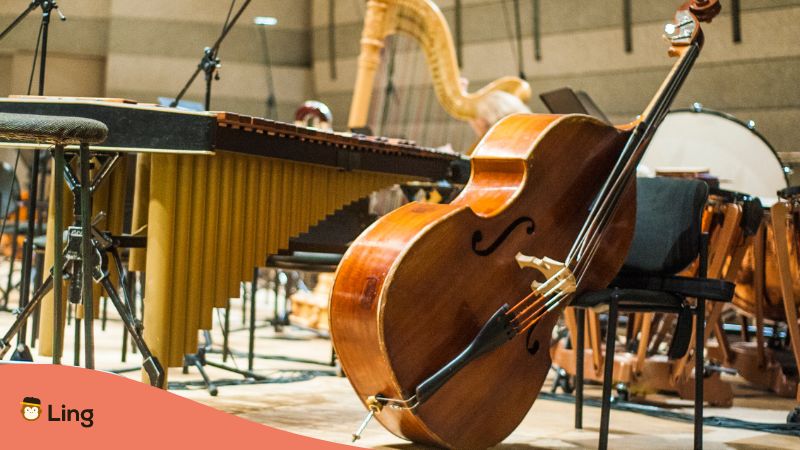
The Cantonese word for “musical instruments” is 樂器 (ngok6 hei3). Below are the common musical instruments in the Cantonese language.
Piano/Keyboard (鋼琴 Gong3 Kam4)
The piano/keyboard is a popular musical instrument that you can see and hear everywhere. With its abundance of landmark music stores and second-hand dealers, Hong Kong has you covered whether you’re looking for a grand piano, an upright piano, or a digital keyboard. Visit one of these stores to purchase the ideal Schimmel or Yamaha at the ideal price. Some of the famous Hong Kong pianists are Gloria Tang Sze-wing, professionally known as G.E.M. or Tang Tsz-kei, Rachel Cheung, and Colleen Lee.
Guitar (吉他 Git3 Taa1)
The use of string instruments like the guitar is very popular in Cantonese culture. In fact, if you have heard about Herman Li, one of the two lead guitarists for the band DragonForce, you’ll be surprised that he is from Hong Kong. If you ever get the chance to go to Hong Kong and you want to look for a nice quality guitar, Tom Lee Music is the place to go. One of Hong Kong’s biggest retail and online guitar stores is Tom Lee Music.
Drums (鼓 Gu2)
Drums are also an important percussion instrument in Cantonese culture. In fact, there is this thing called the “Hong Kong International Drummer Festival 2023”. It is the first and foremost international festival in the city to feature prominently drumming in its many variations in such various genres as Jazz, Pop, Classical, traditional Chinese, and World Music, acknowledging the potential of the drum in Hong Kong. Drum lessons are also one of the top hobbies of Hong Kongers who love music.
Violin (小提琴 Siu2 Tai4 Kam4)
It is also referred to as a fiddle. The body of most violins is made of hollow wood. Although it is the smallest and highest-pitched member of the family, it is frequently used. One of the famous violin prodigies in Hong Kong is Hannah Tam. She was recently featured in the South China Morning Post, where she talked about confidence, inspiration, and passion.
Saxophone (色士風 Sik1 Si6 Fung1)
It is a woodwind musical instrument with a cone body that is often made of brass. A reed on a mouthpiece vibrates to create a sound wave on the inside of the instrument’s body, as is the case with all single-reed instruments. Saxophonist Timothy Sun may soon reach his aspiration to release a solo album thanks to a new record company called Ginger Muse, according to South China Morning Post.
Other Musical Instruments in Cantonese
Now that you have learned the five basic musical instruments in Cantonese let us now learn some more. Here is a list of instruments in Cantonese and their English translations.
| English | Cantonese | Jyutping |
| accordion | 手風琴 | sau2 fung1 kam4 |
| bass guitar | 低音結他 | dai1 jam1 git3 taa1 |
| banjo | 班卓琴 | baan1 zoek3 kam4 |
| cymbals | 鐃鈸 | naau4 bat6 |
| clarinet | 單簧管 | daan1 wong4 gun2 |
| cello | 提琴 | tai4 kam4 |
| flute | 長笛 | coeng4 dek2 |
| gong | 鑼 | lo4 |
| harmonica | 口琴 | hau2 kam4 |
| harp | 豎琴 | syu6 kam4 |
| tambourine | 鈴鼓 | ling4 gu2 |
| trombone | 長號 | coeng4 hou6 |
| violin | 小提琴 | siu2 tai4 kam4 |
| xylophone | 編磬 | pin1 hing3 |
Traditional Musical Instruments In Cantonese Culture
Cantonese culture is very rich in traditional musical materials. The two primary categories of musical instruments are melodic and percussive types. Here’s a list of traditional musical instruments in Cantonese Chinese.
Wind Instruments In Cantonese
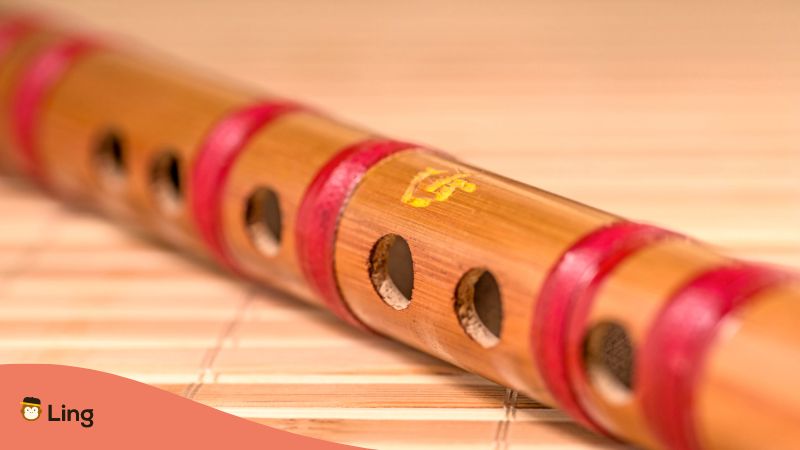
There are many distinct varieties of Chinese wind instruments with different designs, tonal qualities, and playing techniques. Wind instruments are all musical instruments that are played by passing an airstream through a pipe. Let us some
Dizi 笛子 (Dek6 Zi2) – Chinese Transverse Bamboo Flute
This bamboo flute was first known as the hengchui, which means “horizontal blow,” before changing its name to the hengdi and, subsequently, the dizi. The traditional Chinese dizi is constructed of bamboo and has six finger holes, one blow hole, and one hole for the dimo.
Suona 唢呐 (So2 Naap6) – Chinese Trumpet
It is a double-reed woodwind instrument made in China and is the most popular type. The suona’s powerful sound, which is perfect for processions and military events, was easily hijacked for use in popular music.
String Instruments In Cantonese
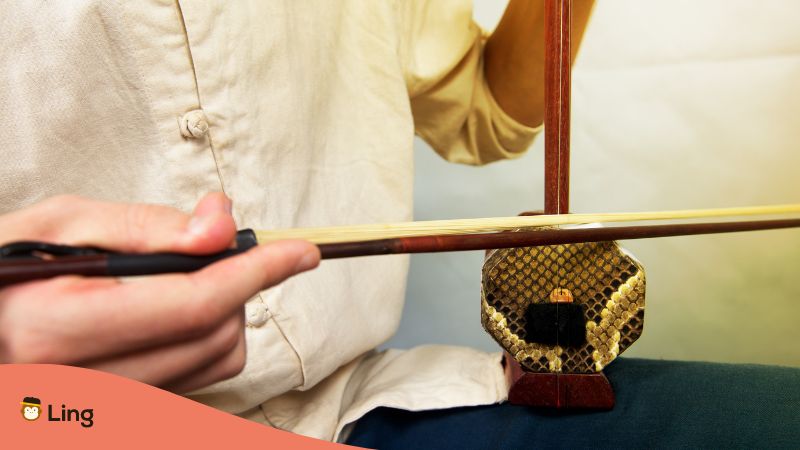
The strings encompass erhu, gaohu (高胡 gou1 wu4), yangqin (揚琴 (joeng4 kam4), pipa ( 琵琶 pei4 paa4), and more. Here are the traditional string instruments in Cantonese.
Yi-wu 二胡 (Ji6 Wu2) – Chinese Violin
It is a two-stringed bowed musical instrument from China, more precisely a spike fiddle, also known as a southern fiddle and occasionally termed the Chinese violin or a Chinese two-stringed fiddle in the West. It can be played alone, in small ensembles, and in both big and small orchestras.
Gaohu 高胡 (Gou1 Wu4) – Bowed String Instrument
The musician and composer Lü Wencheng created the gaohu, a Chinese bowed string instrument, from the erhu in the 1920s. It is utilized in Cantonese music and Cantonese opera. It is the primary instrument used by Cantonese opera ensembles.
Yangqin 揚琴 (Joeng4 Kam4) – Chinese hammered dulcimer
Another name for the Yangqin is the hammered dulcimer. It is played by striking the strings with two chopstick-sized bamboo mallets. The yangqin, which is frequently referred to as the “Chinese piano,” is essential to the accompaniment of Chinese string and wind instruments.
Pipa 琵琶 (Pei4 Paa4) – Chinese Lute or Chinese Guitar
The plucking strokes of the plectrum are described by the words pi, “to play forward,” and pa, “to play backward.” It was initially held horizontally, just like a guitar, and its twisted silk strings were plucked with a huge triangular plectrum carried in the right hand.
Percussion Instruments In Cantonese
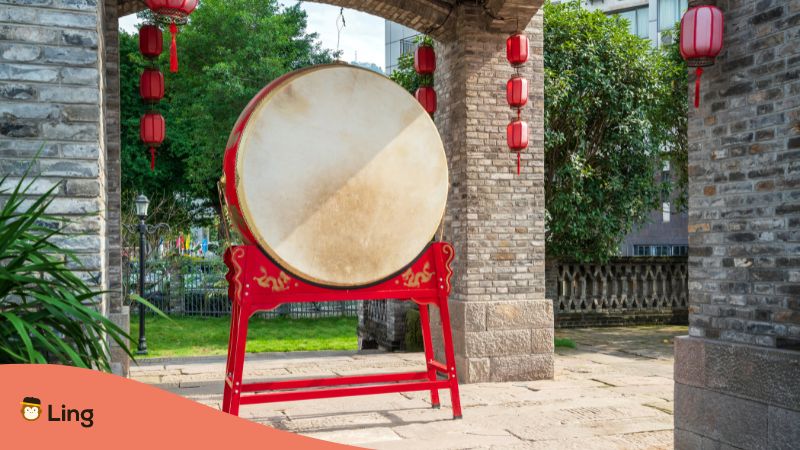
Percussion comprises many different cymbals and drums. There are many different drums in the Cantonese/Chinese culture, and they are called Gu
Gu 鼓 (gu2) Chinese Drums
Chinese drums, known as “gu,” come in a variety of sizes and shapes, with a body often made of wood and a head typically made of skin.
Music And Musical Instruments of Cantonese Opera
Wind, strings, and percussion are among the conventional musical instruments utilized in Cantonese opera. Erhu (二胡 ji6 wu2), gaohu (高胡 gou1 wu4), yehu (椰胡 je4 wu4), yangqin (揚琴 (joeng4 kam4), pipa (琵琶 pei4 paa4), and dizi are among the wind and string instruments, while numerous drums and cymbals are used in the percussion section. The gaohu conducts the orchestra while the percussion sets the general beat and tempo of the performance.
The melody section and the percussion section make up the instrumental ensemble in Cantonese opera. The gaohu (高胡 gou1 wu4) conducts the orchestra while the percussion controls the general beat and tempo of the performance. The huge collection of music used by the percussion section is often referred to as lo gu dim (锣鼓点 lo4 gu2 dim2) or simply lo gu (锣鼓 lo4 gu2). These so-called “percussion patterns” have a number of distinct purposes.
What’s Next To Your Music Lesson? Why Not A Cantonese Lesson?

Musical instruments make life so much better. Without it, there will be no beautiful music and sounds that we enjoy nowadays. But there’s another important instrument that you’ll discover here. A Learning with Ling app feels like playing a game. So, learn Cantonese with Ling app now!
